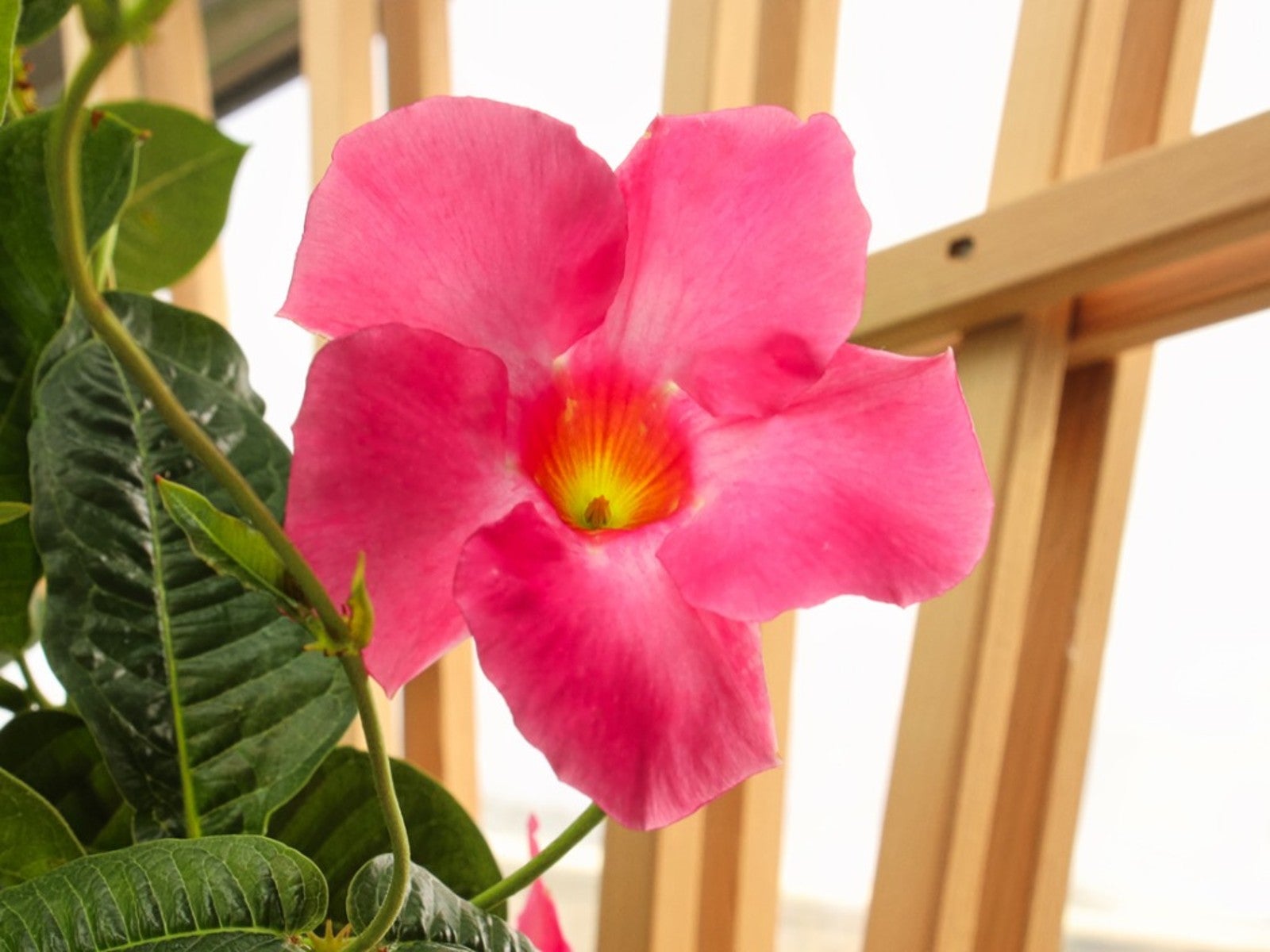
Mandevilla is a gorgeous tropical vine that thrives outside until night temperatures dip to 45-50 F. (7-10 C.), at which time it’s time to think about overwintering mandevilla.
There are two options to mandevilla winter care: allow the plant to go dormant or bring the plant inside to continue to grow. Mandevilla care indoors does require more attention than allowing the plant to go dormant. When indoors, the mandevilla vine light requirements need to be specifically addressed. Read on to learn how to care for your mandevilla through the winter months.
About Mandevilla
Native to Brazil, mandevilla is noteworthy for its dark green, glossy leaves, vining habit and stunning trumpet shaped blooms. It can be grown outside in USDA zones 9-11 and can then be transferred inside for the winter.
Outdoors mandevilla loves light although, depending upon temperatures for your area, it often prefers bright indirect light. A mandevilla also requires soil that is well draining and, unlike many other tropical plants, does not like to be pot bound. During the active growing phase, fertilize your mandevilla once a week with a liquid fertilizer.
Dormant Mandevilla Winter Care
The first option when overwintering mandevilla is to allow the plant to go dormant. In this case, keep the vine outside until temperatures dip below 60 F (16 C), then spray off with water or insecticidal soap to remove any pests. Hard prune the vine to about 12 inches (30 cm).
Store the pruned vine in a cool, dark area like a garage, crawlspace, or basement with temperatures around 50-60 F (10-16 C). Do not fertilize or water except to keep the soil barely damp throughout the winter.
In early spring bring the vine into a sunny area inside. Pinch new shoots occasionally to foster a bushier habit. In late May to early June, repot and fertilize with a water soluble food. Return outside when all danger of frost has passed and temperatures are above 60 F (16 C).
Sign up for the Gardening Know How newsletter today and receive a free copy of our e-book "How to Grow Delicious Tomatoes".
Mandevilla Care Indoors
As temperatures cool outside, begin to acclimate the plant to a move indoors. The amount of light the plant gets indoors is likely less (unless you provide supplemental lighting) so to get the vine used to less light, move it into a shaded area a week or so before its move indoors.
If you have a greenhouse, sunroom or other bright sunny window inside, move the mandevilla inside as soon as the weather cools. As above, prune back the mandevilla -- by half or even more. The goal here isn’t to encourage growth but to simply keep the vine alive and healthy until the spring. As such there is no need to fertilize, and water should be applied only when the soil begins to dry out (about once a week).
If the plant is not provided supplemental lighting, mandevilla will grow slowly will likely not bloom. In fact, it isn’t unusual for the plant to become dormant.
In February, prune the plant back again and begin to fertilize once a month. Since mandevilla flowers on new growth, pruning and feeding will encourage early blooming. Place the plant outside in May or June for the summer.
Mandevilla Light Requirements
If you wish to encourage growth on an indoor mandevilla, it will need supplemental light. Outdoors, mandevilla thrives in bright -- albeit indirect -- sun. You will need to mimic this light indoors if you wish to obtain growth or blooms.
A sign that you should provide additional light is plants that become leggy. Even a sunroom doesn’t have the same amount of natural light as outdoors. You may wish to use supplemental fluorescent, incandescent bulbs or grow lights.

Amy Grant has been gardening for 30 years and writing for 15. A professional chef and caterer, Amy's area of expertise is culinary gardening.
